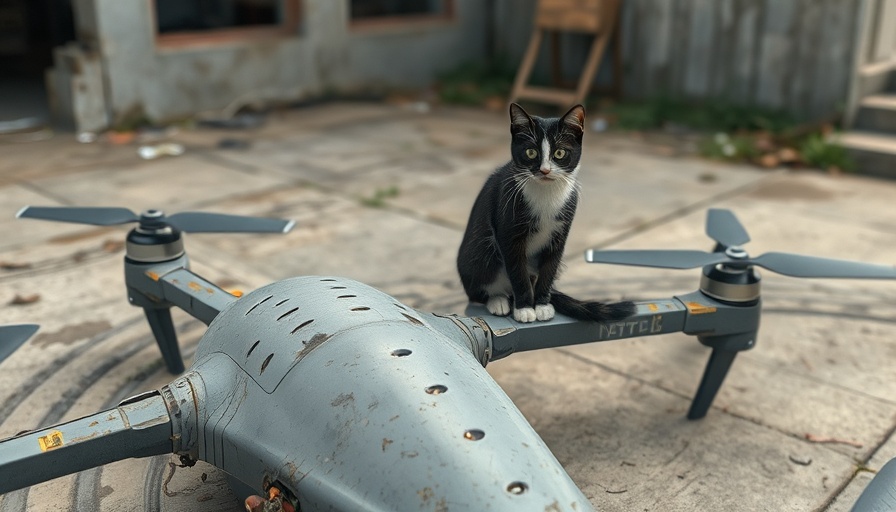
Russia's New Drone Warfare: The Rise of Turbocharged Shahed Drones
The recent escalation in Russia's drone warfare reveals game-changing enhancements to the Shahed drones, transitioning from simple attack vehicles to sophisticated weapons equipped with jet engines, armor, and artificial intelligence. After a dire attack on civilian targets in Odessa, where residential buildings caught fire and hundreds had to evacuate, Ukrainian intelligence has noted a concerning trend: Russian attacks are predicted to increase dramatically, potentially deploying up to a thousand Shahed drones in a single night.
The Technological Leap: Jet Engines and Enhanced Armor
Initially designed under license from Iran, the Shahed-136 drones were known for their basic design and relatively low cost, making them a chilling addition to Russia's military arsenal. However, modifications now incorporate turbojet engines, which improve speed considerably—from 120 mph to about 300 mph. This enhancement reduces the warning time for potential targets and complicates intercept strategies. The more advanced turbojet variants are reportedly harder to mass-produce, indicating a potential strategy of deploying both standard and jet-powered versions.
The Implications of AI in Drone Warfare
Another critical upgrade is the incorporation of AI technologies. While details remain sparse, the integration of AI could enable the Shahed drones to make autonomous decisions during flight, potentially increasing their lethality by improving targeting accuracy and navigation capabilities. As warfare continues to evolve technologically, the ethical implications surrounding the use of autonomous drones demand careful examination, particularly concerning their deployment in populated areas.
A Future of Drone Warfare
As the war in Ukraine continues, the advancements seen in Shahed drones serve as a stark reminder of how rapidly military technology is evolving. Emerging capabilities, like the introduction of armored components to protect engine compartments, suggest that these drones are being optimized specifically to withstand countermeasures aimed at neutralizing them. With predictions indicating a significant uptick in drone utilization, understanding the technological advancements of these drones becomes crucial for both military strategists and civilians observing the conflict.
In conclusion, the Shahed drone advancements underscore the pressing need for discussions around defense strategies and ethical AI deployment in warfare. Monitoring these developments is essential for comprehending their implications on international security and civilian safety.
 Add Row
Add Row  Add
Add 




Write A Comment